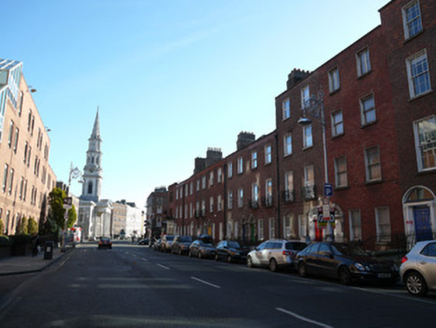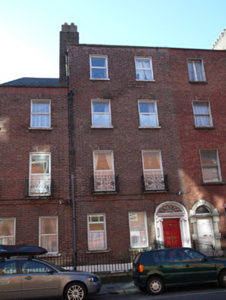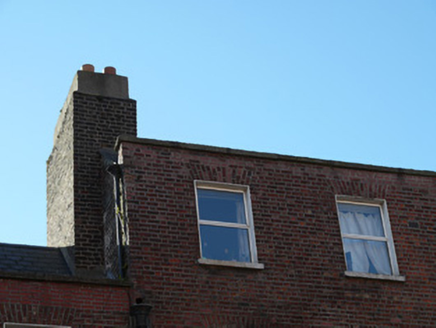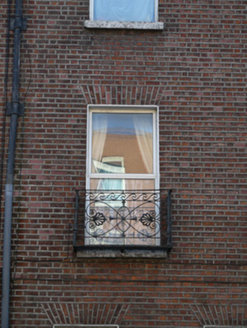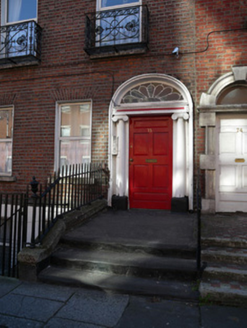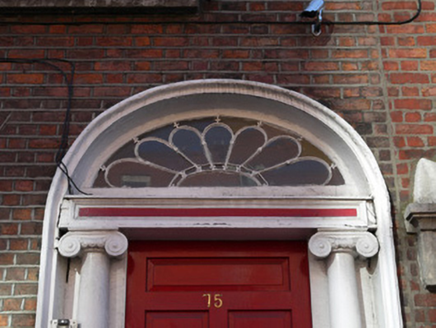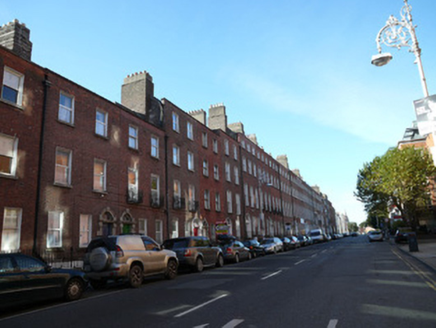Survey Data
Reg No
50070482
Rating
Regional
Categories of Special Interest
Architectural, Artistic
Original Use
House
In Use As
Apartment/flat (converted)
Date
1770 - 1790
Coordinates
315586, 235535
Date Recorded
27/10/2012
Date Updated
--/--/--
Description
Terraced two-bay four-storey over basement former house, built c.1780, now in use as flats. Pitched roofs, parallel to street to front (north), perpendicular to street to rear. Parapet with granite capping to front elevation. Brown brick chimneystack shared with property to east. Red brick walls laid in Flemish bond. Cut granite plinth course over rendered walls to basement. Square-headed window openings having patent reveals and granite sills. Replacement uPVC windows. Cast-iron balconettes to first floor windows. Segmental-arched door opening having painted masonry doorcase with engaged Ionic columns. Petal fanlight. Timber panelled door. Steps to entrance platform having asphalt surfacing. Cast-iron railings on granite capping to cut granite plinth wall. Cast-iron newel post to corner. Basement area enclosed from pavement by rendered plinth wall with cut granite coping, with recent metal railings and gate. Recent external concrete stairs to basement area from pavement. Square-headed door opening to basement having recent timber door. Cast-iron coal hole cover set in granite pavement to front of house.
Appraisal
This elegantly proportioned former house makes an important contribution to the streetscape. Its window and door openings are typical of its type. It shares details with its neighbours such as the treatment of the entrance and the third bay at ground floor level, both elements enliven an otherwise austere facade. Eccles Street was laid out in 1772 by the Gardiner Estate. It was to be an arterial route leading to Gardiner's ambitious yet unrealised Royal Circus, planned for the north-west end of Eccles Street. The south side of the street is an impressive, almost entirely, late eighteenth-century terrace with taller buildings to the centre of the terrace. It marks a gentle transition from the lower end-of-terrace buildings to the central taller buildings of the terrace.
